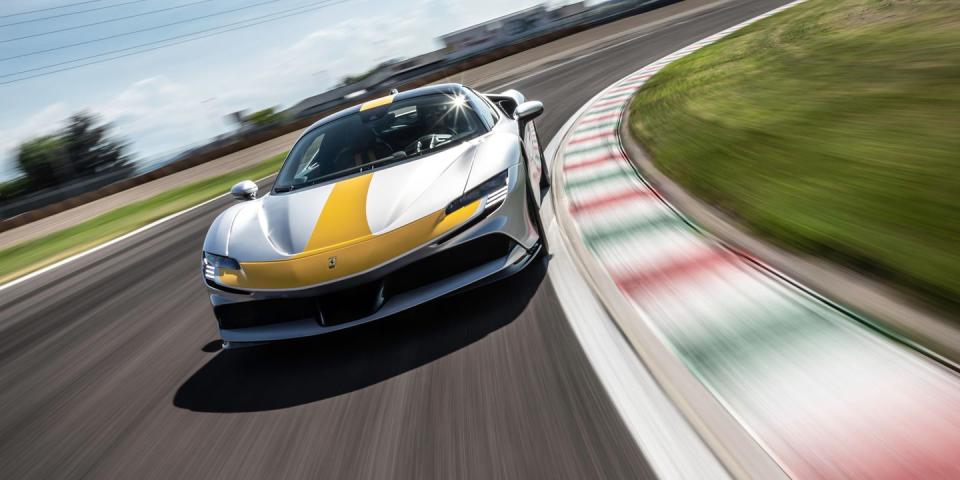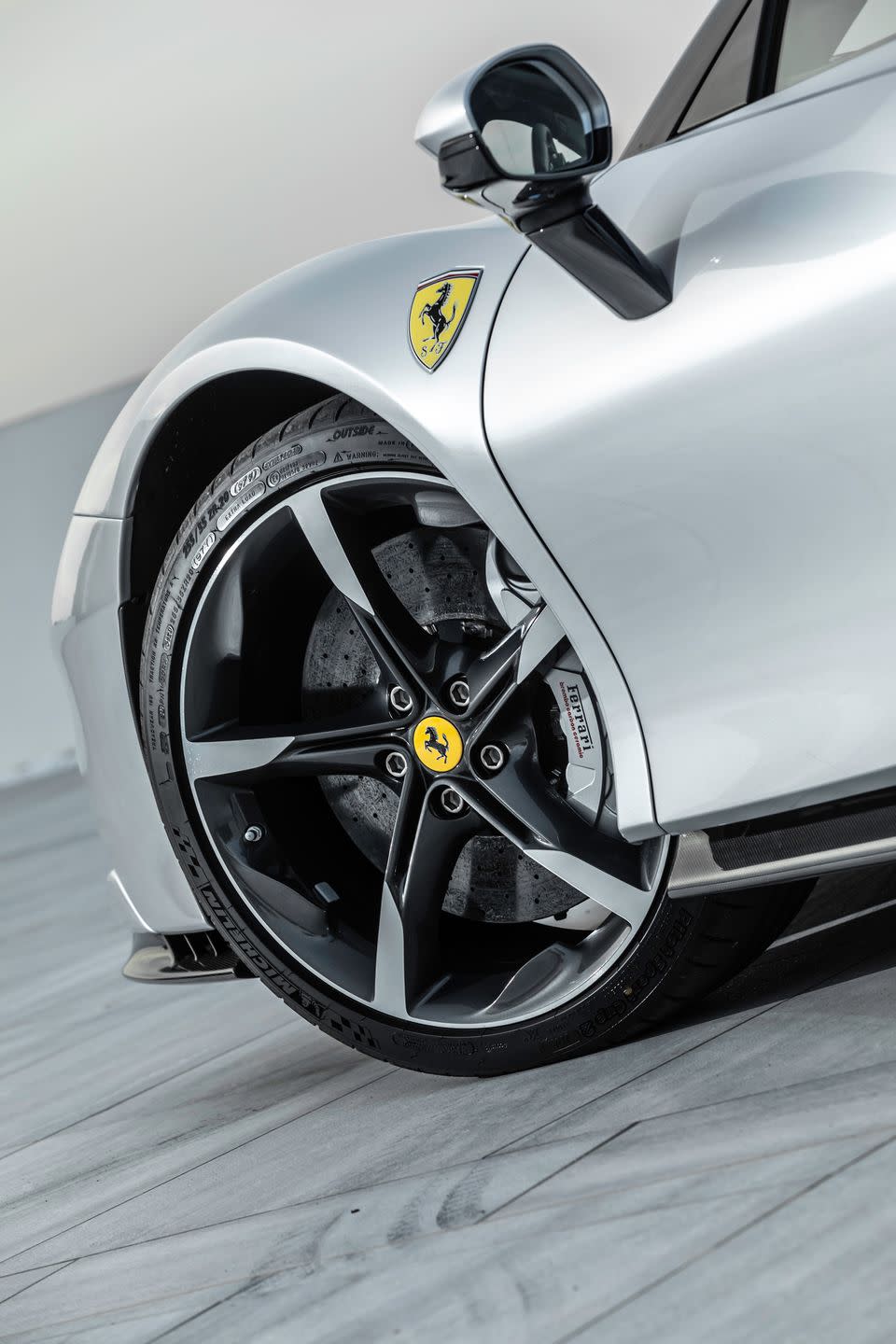Why the Brakes Are the Most Impressive Thing About the Ferrari SF90 Stradale

Of all the mind-blowing things about the Ferrari SF90 Stradale, it's the brakes that got me. Or to be more accurate, the braking system, because being a hybrid, regenerative braking from the electric motors helps slow the car down in concert with pad and disc. Of course, this sort of "blended" braking is nothing new in the world of hybrids, but the way Ferrari manages it is astonishing.
This summer I had the extremely unique opportunity of driving an SF90 with the optional Assetto Fiorano pack around Ferrari's private test track, which of course is the circuit it's named for. Around the tight, fast circuit, the SF90 is stupendously fast and far easier to drive than a 986-hp mid-engine car should be. The dual front motors give the SF90 almost supernatural cornering ability as each wheel can be over- or underdriven to change the car's cornering line. To be fast in an SF90, get on throttle early and often and let the systems sort everything out.
Those front motors disengage above 124 mph because that's as quick as they can spin, and they wouldn't contribute much to cornering at these speeds. At Fiorano, Ferrari had us come off throttle for a few hundred feet each lap for some combination of safety and noise regulations. But there was still enough runway to hit 140 before braking into Turn 1. Raffaele de Simone, Ferrari's chief test driver, says he's seeing close to 170 there on really fast laps.

When you hit the brakes in an SF90 Stradale beyond 124 mph, you get a combination of traditional friction braking and regen from the rear electric motor, which sits between the engine and transmission. But as you dip below that 124-mph threshold, the car starts to blend in regen from the front motors in favor of the rear motor. The truly astounding thing is that you can't feel any of this happening.
In fact, I didn't think about regenerative braking once while lapping the SF90. I sat down with Marco Carnà, vehicle dynamics engineer for the SF90, to look over the data from my lap; he was the one who pointed out what was happening under braking. Depending on a number of factors, the car is constantly tweaking its blend of regen from front and rear motors and pad-meets-disc. And all of this happens without any upset to the car's balance or any change in feel from the pedal. Essentially you hit the pedal and the car stops hard, lap after lap.
With many modern hybrid and electric cars, the brake pedal feel is strange. Blending regen and friction braking requires a "by-wire" pedal with no physical connection to the hydraulic system, and if this is not set up right you end up with a brake pedal that feels springy and disconnected. It's disconcerting, because the pedal gives you hardly any feedback. But Ferrari has the pedal feel nailed. It's firm and intuitive, making modulation very easy. It’s all the more impressive when you consider that this is Ferrari's first by-wire brake pedal.

That you don't feel exactly which components are doing what is the point, de Simone says. This was one of the most difficult projects he's worked on in the nearly 20 years he's been with Ferrari. The SF90 is not the first Ferrari hybrid; that'd be the LaFerrari. But it's still the company's most complex car yet. Making all the various electronic systems work harmoniously and feel intuitive to drivers coming from more traditional Ferrari models took years of work, but the results speak for themselves. This is a car that moves as a whole, not as a bunch of disparate parts. In many ways it's a more impressive technical achievement than the LaFerrari before it.
During my visit, de Simone pointed out a number of times that the SF90 represents the future of Ferrari. All automakers need to embrace electrification, and Ferrari is doing so in a very Ferrari way. The systems are cutting-edge, and they flatter the novice without alienating the expert. If indeed this is the future, it's one to be excited about, because it's a future in which technology and driver engagement live harmoniously.
You Might Also Like
